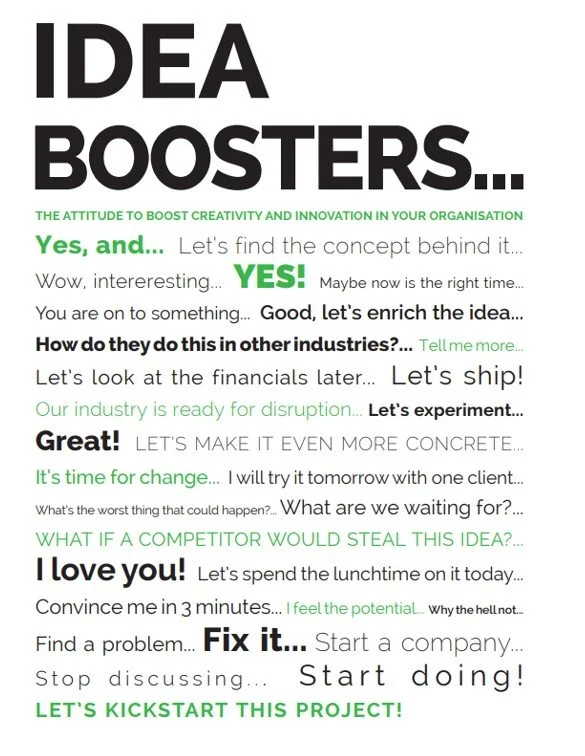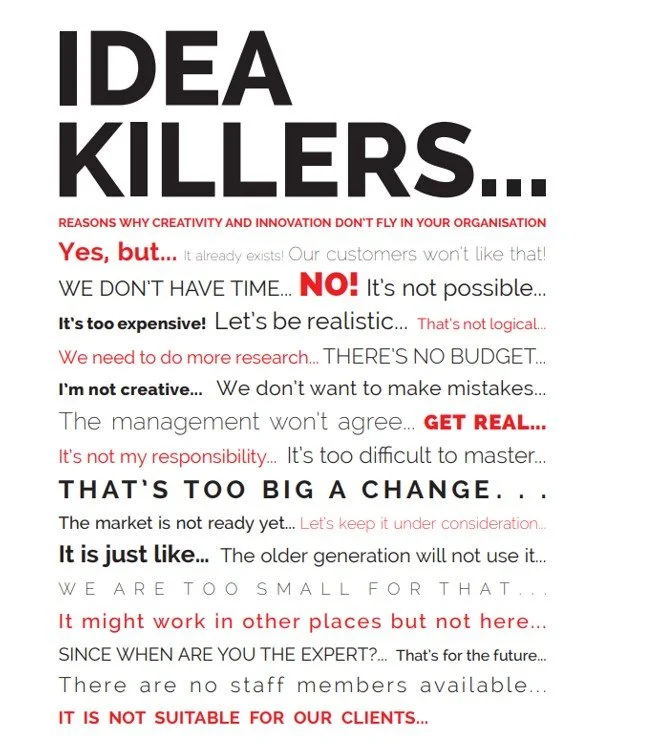HARLEY-DAVIDSON PATROL DRONE:
SELL SHEET
BACKGROUND
A future thinking workshop was conducted with 12 participants using the following creative foresight technique:
Select an industry.
Select a brand/company.
Describe a product offering in the new industry.
The objective was for participants to use a known brand and imagine it entering a new business segment. The participants analyzed what was inherent to the chosen company and the new business space, as well as what areas of opportunity exist. The workshop provided opportunities to develop critical and creative thinking skills, and most importantly to have fun imagining a near-future. Participants learned design fiction in the development of near-future scenarios.
As the workshop was only four hours, Dr. Dave chose the industry, company, and physical archetype for participants to create:
Industry: drones and autonomous flight (autonomous robotic devices (ARDs)
Company: Harley-Davidson (HD)
Archetype: Sales sheet
The following brief was provided to participants prior to the workshop:
To better understand how Harley Davidson (HD) can develop new business opportunities within the autonomous robotic devices (ARDs) segment through a design fiction workshop. Participants will conceptualize, write, and create ways that Harley-Davidson can enter the drone industry, demonstrating the new offering within a product sales sheet.
PRE-WORKSHOP
Workshop participants were provided the following background and context to prepare for the exercise.
Harley-Davidson (HD) is experiencing a difficult business environment as well as long-term challenges. As HD buyers (e.g., Baby Boomers, Gen X) begin to “age out” of riding motorcycles and younger demographics (e.g., Millennials, Gen Z) shy away from their “grandfather’s motorcycle”, the brand’s future is uncertain. HD has become an American icon based on its “cool factor”; unfortunately, younger demographics do not perceive the brand as cool; hence, HD is struggling to attract new, younger riders. In addition, the following trends are converging to add to HD’s challenges:
Aging population – HD’s core demographic is aging out of riding, while younger demographics do not see the brand as cool and in addition are using other methods for transportation.
Technology – younger demographics have grown up in the digital age and use online activities for entertainment, communicating and interacting with friends, and exploring new locations.
Transportation – younger demographics are using other methods of transportation, e.g., ride sharing ride hailing, as well as reduced propensity to drive automobiles and ride motorcycles.
Urbanization – as urbanization increases, it is increasingly difficult to safely store a motorcycle in large cities as well as ongoing concerns regarding rider safety, especially for new riders.
HD has tried several product directions to attract new riders, but none have produced the necessary unit volumes for long-term growth:
Street 500 and Street 750 models
LiveWire brand of electric motorcycles
X400 model for India
Balance bikes (purchased Stacyc)
Ebicycles
Another key challenge is HD’s on-road only focus. In comparison to Japanese, Canadian, and European competitors, HD only offers on-road motorcycles (the Pan American is HD’s Adventure bike, mainly for on-road adventures). Japanese OEs offer a wide variety of powersport products including the following:
On-road motorcycles (sport, standard, supersport, cruisers, touring, Adventure)
On-road scooters
Off-road motorcycles (trail, enduro, motocross)
Off-road All-Terrain vehicles (ATVs)
Off-road Side-by-Side vehicles (SxS)
Personal watercraft (PWC)
Recently European brands Ducati and Triumph have entered the motocross (MX) market to appeal to new riders and current enthusiasts. In addition, Canadian brand BRP is re-entering the motorcycle segment. The ability to attract a wide variety of powersport enthusiasts, allows the Japanese/Canadian/European brands to spread risk across multiple vehicle segments.
The workshop challenged participants to ideate on how HD could create a new business model within the autonomous robotic device (ARD) segment, specifically with drones. Current uses of drones are:
Policing and law enforcement
Fire services, first responders, search & rescue
Search and rescue
Land mapping
Construction
Delivery service
Entertainment/media
Military
Personal usage (e.g., hobbies, photography)
Agriculture
Humanitarian aid
Safety inspection
Insurance industry
Weather forecasting
Wildlife conservation
DURING THE WORKSHOP
An introduction to the agenda and design fiction was followed by a review of the background materials and an overview of HD’s history and current business. Visual examples of drone usage within various industries were posted on the walls of the room to provide stimulus throughout the workshop. It was explained that drones are being used in multiple industries by both incumbents and start-ups. Dr. Dave challenged participants throughout the workshop with questions and ongoing probes to help expand and narrow ideas. For example:
What are HD’s strengths and weaknesses?
How can HD leverage current knowledge into drones?
Could HD’s brand value be leveraged in the drone industry?
What current internal technologies and expertise could HD transfer to drones?
What segments offer the biggest opportunities for long-term growth?
Should HD purchase a drone company to gain critical technology and insights?
Three groups of four participants were organized. The groups were instructed to discuss the background materials and overall assignment, conduct a SWOT analysis and a Six Thinking Hats review regarding HD and drones, then ideate on possible ways that the company could enter a specific drone market segment. In addition, the groups were instructed to develop a hypothetical product as HD’s entry into the specific market segment (e.g., construction, entertainment).
Several analysis and ideation tools were demonstrated as drivers for ideation. For example, SCAMPER, “What if” statements, and mind maps. In addition, all participants received IDEA BOOSTERS and IDEA KILLERS cards to assist during ideation.
Groups shared ideas and a dot-voting session was used to narrow the list. The participants agreed on the adoption of HD entering the law enforcement and first-responder industries. In relation to a past workshop which developed the Autonomous Patrol Support (APS) patrol drone, the HD drone was positioned as a “partner” for officers on patrol. The chosen direction was due to several factors:
HD has offered vehicles in the police/fire/rescue space for over 100 years.
Strong brand awareness in the police/fire/rescue space.
American-made and owned company attracts local and national government support.
HD has business support functions for police/fire/rescue which already exist.
Experience in electric vehicles with LiveWire, balance bikes, etc.
Mock sales sheets were created and posted on the walls. Participants reviewed and posted notes in silence, followed by a group discussion to improve ideas and choose the most realistic features and content for the sales sheet. In addition, the teams created the following mock headlines for the new products and the business model:
You asked. We delivered.
Answering the call of next-gen policing.
Fly into the next-gen of police support.
Electrifying police fleets.
On the road or in the air, HD has your back.
Participants also developed several possible product names based on HD’s current motorcycle naming structure. For example:
Air Glide (based on Road Glide)
Air King (based on Road King)
Air America (based on Pan-America)
High Flyer (based on Low Rider)
Air Bob (based on Street Bob)
The workshop addressed the following question:
What if Harley-Davidson entered the drone industry to leverage the company’s long history of servicing police/fire/rescue agencies?
POST WORKSHOP
Approximately one week after the workshop, the following sales sheet was shared to participants. Based on the group’s ideas and rough illustrations drawn during the workshop, this low-fidelity archetype was developed to visually communicate how an HD law enforcement drone could be used in current, real-world situations.
A follow-up online video discussion was held to drive further discussion, share additional comments and questions, as well as new ideas. Overall feedback from the participants was extremely positive as all asked to be included in the next public workshop.





